-
Posts
1,256 -
Joined
-
Last visited
-
Days Won
29
Content Type
Profiles
Forums
Downloads
Gallery
Posts posted by asbo
-
-
First sanity check: do you have any of Office installed? I found the type library under "Microsoft Access 14.0 Object Library Version 9.0" and am running Office 2010 Pro Plus.
Second sanity check: does the snippet about not work for you? I drop it and it opens Access on my machine.
-
Then find a Windows CD? Or search to see if you can download something from Microsoft to install the languages.
-
 1
1
-
-
destination computer doesn't have any font!
i don't have Windows CD.
Can i install my font(Persian Font)?
This article describes what I was referring to: KMKB0041: HOWTO: Configure Windows for right-to-left languages such as Arabic, Farsi or Hebrew
-
Your Windows regional settings are configured for RTL, correct?
-
I'm in for one of the most expensive t-shirts I've ever bought.
-
From Symbio's GOOP FAQ:
Q: Why does the activation suddenly fail?A: Normally, this should not happen. Symbio‘s license server counts the number of activations and the default setting allows the license to be activated on five different machines. This is normally sufficient. If you hit the limit, just contact GOOP(at)symbio.com.
-
Use the Boolean To (0,1) node to convert your digital input to analog data.
-
You might check eBay - I know that hardware gets listed there regularly, but the selection is varied.
-
-
Yep, reproduced this in LV2011SP1f2, LV2010SP1, and LV2009 (all 32-bit). Guess you're the first lucky guy to find this - and know about it.

-
Did you find this in code you loaded from a previous version of LabVIEW, by chance?
-
So the question is now, does anyone know of another LabVIEW datatype that is sure to be truely pointer sized when embedded in a cluster or alternatingly is there any objection to not include the Windows handle in the message structure?
You're referring to the hWnd handle, right? A happy compromise might be to use whatever type works correctly internally and then have a VI for exposing it which will output it to one of two terminals, a U32 or a U64, based on the platform via a Conditional disable structure.
-
Rofl is correct. You could convert your conditional disables to look at a project condition (I forget the specific term) instead of the platform. You'd have to either remember to change the variable before each build, or you could write a pre-build VI which checks the platform and asks for confirmation, changing it based on that input (I *think* all that is possible now).
-
Here's an older thread about interfaces in LabVIEW: http://lavag.org/topic/10621-interface/
-
When using CLNs and *especially* when directly manipulating memory, save your VI before every time you run it! I can't count the time of times I've crashed LabVIEW mucking around with CLNs.
-
How do you know how many elements are in the array of Pluto structs?
The two attached CLNs will help you operate with points. The second is useful for arrays of known length. Both are examples of operating on 4-byte signed integers.
These look like snippets, but they are not. They were sourced from this article: Dereferencing Pointers from C/C++ DLLs in LabVIEW.
-
The waveform you get from your DAQ is not continuous, it looks like you're just requesting 1000 samples each iteration. You'll need to use a shift register to maintain a rolling count and add that value in with your latest array size.
-
The Y is an array because it's all of the Y points in a waveform. Use the Index Array node like you did before to get a specific element.
You asked for a timestamp, not an index. If you're looking to get the maximum index, get the size of the Y array and then subtract one (based indices are zero-based). In the last VI, you weren't getting the latest Y value, you were getting the first Y value in the latest block of data.
-
I think that's the one that most people are likely to run into. "Array data changes unexpectedly when passed through a case structure in a timed loop" could be pretty nasty too, but I don't often use timed loops.
-
I don't have any other insight for you. Try researching the error code and see if you can find out more about its root causes. Windows errors codes are often referred to in hex, so 0x80004005 in this case.
-
 1
1
-
-
You could try contacting Microsoft support directly. I'm sure someone else is hosting it elsewhere, but it may be a little fishy to pull it from another site. If you have the patience, I'd go with the former.
Or you could use the Wayback Machine. http://web.archive.org/web/20100722104106/http://support.microsoft.com/kb/829558
-
I think Yair's warning is more that you can't assume that the drag completed successful on that event; only that the drag completed.
-
1) Disable
1. Project files are text files. How can you merge them without potentially breaking the project.
2. There is no Continuos Integration built into them.
3. There is no automatic builder that will create different versions of exes from the same project in the SCC.
4. Requirements + bug tracking integration.
5. Statistics over commits, bugs and benchmark dead lines.
1) Disable merging/diffing for project files.
2-4) A versioning tool should not be playing these roles, something so monolithic would undoubtedly not work well. But you acknowledge that.
5) SVN at least gives you commit stats by user (and maybe some others) but TSVN provides some bug tracker integration. What dead lines are you expecting to track in a LabVIEW codebase?
-
Select the paintbrush tool from the tool palette, right click on the gray area of Waveform A, then select the T in the top right corner in the color palette which appears. You can left-click the plot list to apply the same color.
Right-click the scale, select Duplicate Scale. Right-click the new scale, select Swap Sides.
The rest should be easy through the properties dialog.


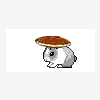
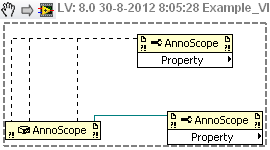
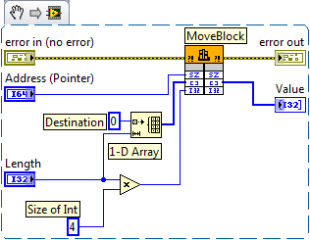
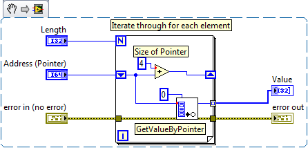
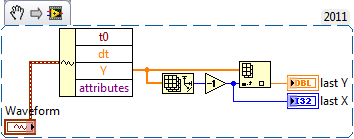
Build success but exe can not run due to some weird service?
in Application Builder, Installers and code distribution
Posted
I haven't seen the "<W> Server: localhost" status before (I assume it's indicative of being loaded through the web server...), but the "EWP4ASTPST.lvproj/My Computer" indicates the project and target the VI is loaded under. The former is useful for ensuring that the VI is scoped to the correct project (logistical organization) and the latter is to ensure that the VI will be compiled for the correct target (other choices would be RT devices and probably WinCE/ARM/whatever other platforms LV supports).
However, I haven't messed with the web server at all, so I can't explain your symptoms. Did this just start happening? Easy, shot in the dark suggestions would be:
* restart the PC
* check <Program Files>\National Instruments\LabVIEW 2011\resource\webserver\logs for anything suspicious
* double check that web server doesn't have a screwy configuration for that VI
* do a repair on web server (if you can do just that component)
* ... or all of LabVIEW (if you can't)